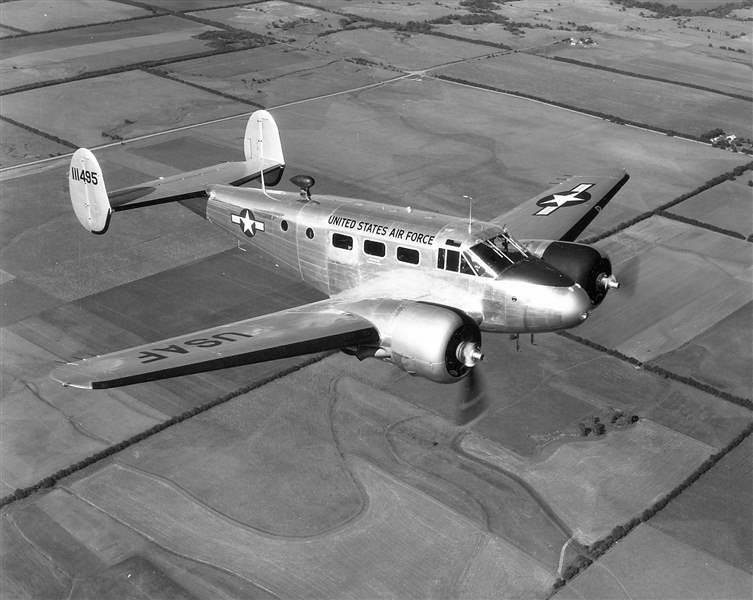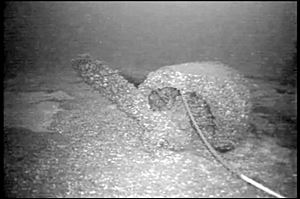
LAKE ONTARIO YIELDS A DIFFERENT KIND OF WRECK
Plane in 1952 crash found thanks to Toledo connection
7/9/2014
A U.S. Air Force C-45 aircraft, like the one shown here, was abandoned during flight by its crew in 1952 and has been located in deep water off Oswego, N.Y.
SHIPWRECKWORLD.COM

A U.S. Air Force C-45 aircraft, like the one shown here, was abandoned during flight by its crew in 1952 and has been located in deep water off Oswego, N.Y.
OSWEGO, N.Y. — When a group of explorers found the wreck of a long-lost military plane in the depths of Lake Ontario, they had a little help from Toledo friends.
The trio — Jim Kennard, Roger Pawlowski, and Roland Stevens — were searching last month for underwater shipwrecks when they spotted an aircraft on the screen of their sonar technology. Their discovery, a two-engine U.S. Air Force C-45, had crashed into the lake more than 60 years ago.
The plane went down in 1952. A malfunction in the left engine had disabled the aircraft during a routine flight. Its five occupants, including two civilians, chose to parachute to safety — the first time any of them had parachuted from an airplane.
The aircraft flew on autopilot until its fuel ran out. Then it plunged into the water.
The submerged plane is remarkably well-preserved. Photographs show that only several pieces of hardware are missing.
The crash site was near Oswego, N.Y. But its discovery was possible because of funding from 455 miles away, at Toledo’s National Museum of the Great Lakes/Great Lakes Historical Society.
Chris Gillcrist, the museum’s executive director, said the group regularly awards grants to defray the cost of searching for shipwrecks. The biggest expense, he said, is gasoline.
To be eligible for grant money, explorers must meet two main criteria, Mr. Gillcrist said. First, they must understand and appreciate the historical value of their work; they can’t be, as he put it, “treasure hunters.”
Second, they need to conduct solid scientific research. Locating shipwrecks requires the use of side-scan sonar and other specialized technology, which need user expertise to work.

A portion of the plane in Lake Ontario is shown. It was found with the aid of Toledo’s National Museum of the Great Lakes and the Great Lakes Historical Society.
The C-45 isn’t the first find for the Lake Ontario explorers, who have partnered with Great Lakes for about six years. But it’s one of their more unusual discoveries, largely because of its rarity.
“It’s not that often you find a plane” at the bottom of the lake, Mr. Gillcrist said.
The discovery of the C-45 might raise comparison to the ongoing search for Malaysia Airlines 370, the passenger flight that drew international attention when it went missing in March.
But if anything, locating the Air Force plane only underscores how difficult the Malaysian search really is.
“It took 60 years to find [the C-45], and Lake Ontario is a relatively small area,” Mr. Gillcrist said, drawing a comparison between the two incidents. Finding a plane in the expanses of the Indian Ocean, he said, poses an even greater challenge.
For now, though, the C-45 will remain underwater. Because the aircraft is still considered military hardware, the team needs approval from the government to move it. And retrieving the waterlogged plane might be more trouble than it’s worth.
Consider it, as Mr. Gillcrist said, among the “discoveries that tell interesting stories.”
— Marissa Medansky